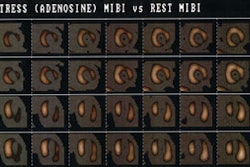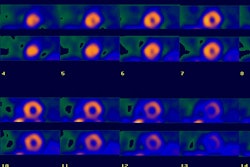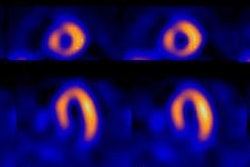Semin Nucl Med 1993 Apr;23(2):133-47
Cardiovascular applications: current status of immunoscintigraphy in the
detection of myocardial necrosis using antimyosin (R11D10) and deep venous
thrombosis using antifibrin (T2G1s).
Manspeaker P, Weisman HF, Schaible TF.
The remarkable progress in immunologic techniques in the development of
monoclonal antibodies offers the potential for powerful new tools for the
detection of cardiovascular disorders, such as acute myocardial necrosis and
acute deep venous thrombosis, in an accurate, safe, and noninvasive manner.
Historically the use of monoclonal antibodies has been viewed as a tool
dominated by the field of oncology. However, because of the relative ease of
identifying and characterizing well-defined, unique antigens on necrotic cells,
blood clots, and cellular components of the circulatory system, the chance for
success in developing a clinically useful diagnostic product is significantly
enhanced. In addition to being unique, these antigenic sites are also virtually
universal in their expression by the targeted tissues or cells in the human
population. Also, the epitope for these antibodies is less prone to
"shedding" than many of the tumor markers present on the surface of
malignant cells. This review describes the clinical experience with two
immunoscintigraphic diagnostic agents specifically designed for the assessment
of cardiovascular disorders resulting in the death of myocytes and the formation
of acute blood clots indium-111 antimyosin-Fab-diethylenetriamine pentaacetic
acid for the detection of myocardial necrosis and technetium-99m antifibrin Fab'
(T2G1s) for the detection of acute venous thrombosis.



